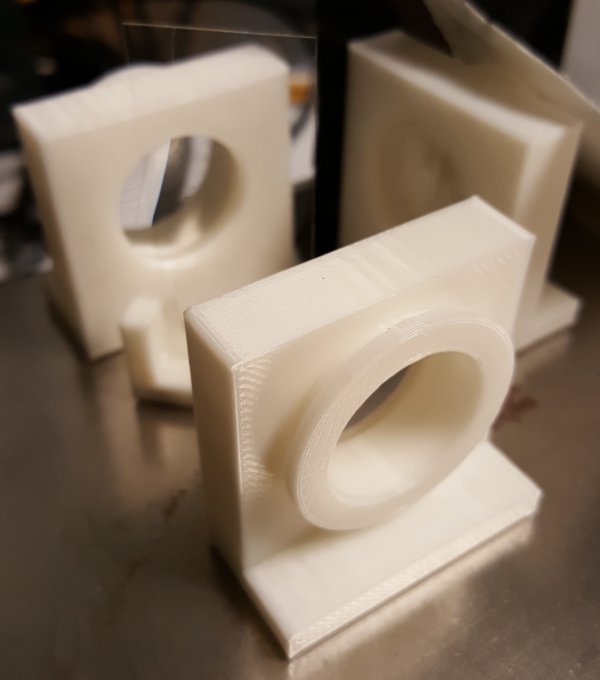
For my final project, I made some holders for the optical elements of the confocal scanner detector. There are holders for three lenses, a beam splitter, the laser diode, and the phototransistor breakout board. I prototyped the optics with Thorlabs components on an optical bench. The 3D printed holders are much lighter and more portable than the Thorlabs components. The 3D printed holders are of course less precise, but the confocal scanner requires less precision than other applications. The holders have magnets epoxied into reliefs, then I used the water jet cutter to make a magnetic base. Thus the optical elements are stable, but I can forcilbly slide them during alignment.
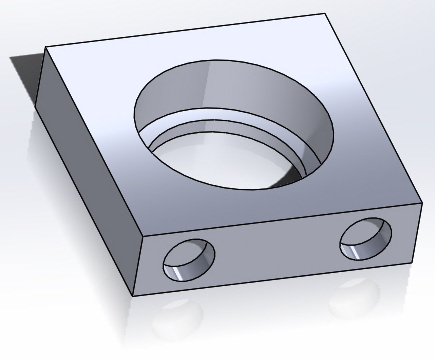
I went through two cycles of design so far. The second version has a third magnet to define more of a plane and decrease tilt, and I increased the diameter of the hole a bit as the lens was a bit too snug in the first version.

I designed and printed some test surfaces for the confocal scanner. I will measure the resolution of the scanner. What are the minimum features it can detect, and how noisy is the detection? Thus I created surface with different wavelengths and different amplitudes. For one surface I used SolidWorks.

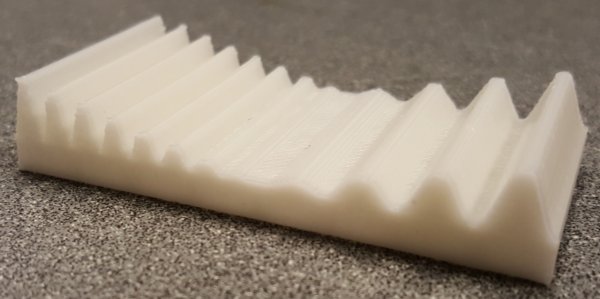
I made another surface using Antimony by Matt Keeter. I generated a function using the syntax described in Appendix A of Matt Keeter's thesis. In particular, the operators go before the arguments. For example, $X^2+Y^2-1$ is represented by
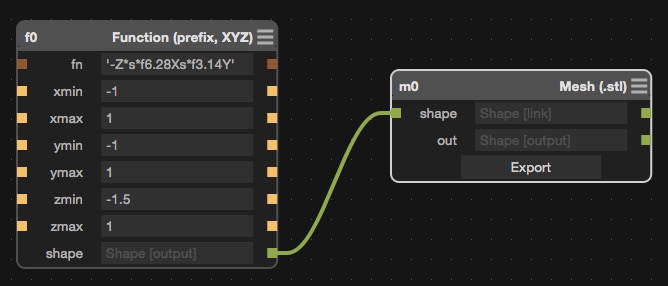

I also designed and printed some filter holders to filter small volumes (several hundred microliters) in Eppendorf tubes. This has been a great example of a task which is not so hard for HTMaA, but has been quite useful in the biology lab!
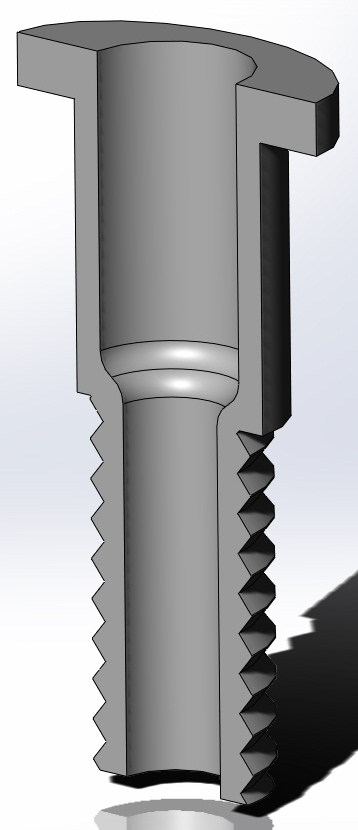
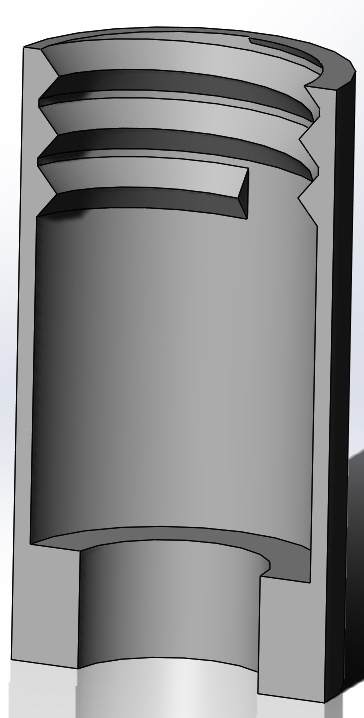
For scanning, I tested the Sense and the NextEngine.